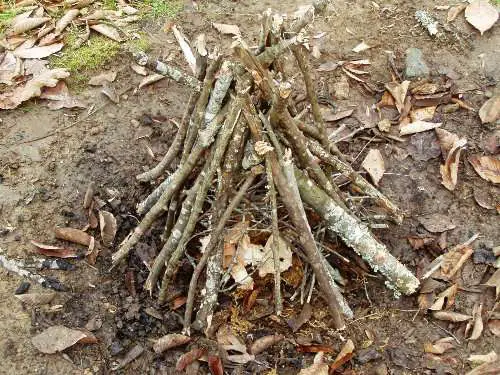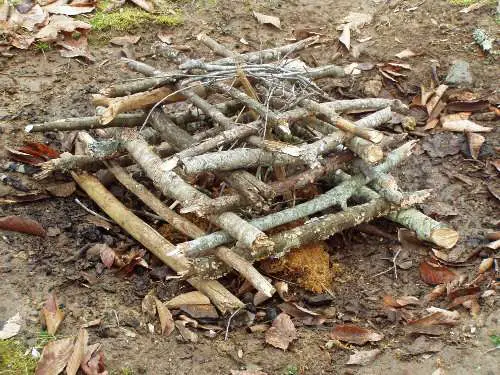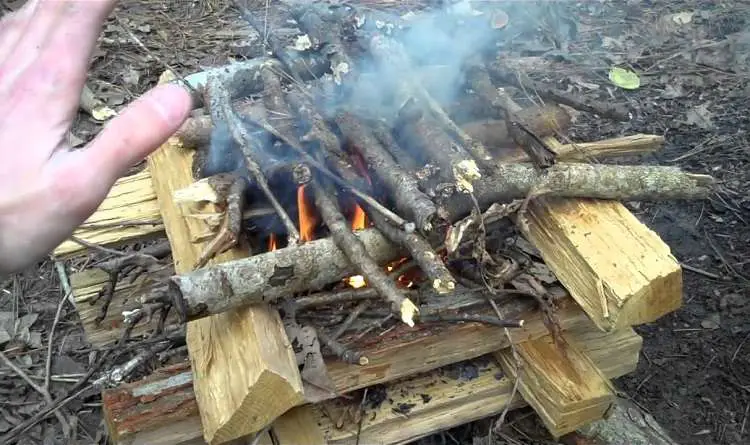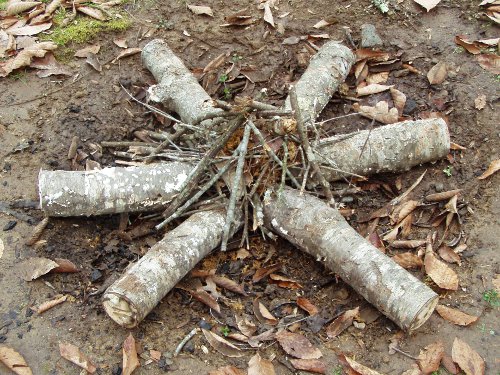Ask a survivalist or outdoorsman what is the thing they miss the most when surviving outdoors and they may tell you toilet paper.
But, you won’t die without two-ply!
Truth is, campfire is probably the single most critical aspect of actually surviving outdoors, particularly in adverse climate conditions where the threat of hypothermia is real.
Fire, after toilet paper, of course [;)], is man’s most trustworthy and versatile friend in the wilderness.
It was a tool that helped differentiate Homosapiens from other ape-like ancestors millions of years ago and is just as vital to our survival today as it was then.
From keeping warm to cooking food to keeping dangerous predators at bay, fire is always worth having on hand.
For this reason, serious explorers and trekkers should always carry either weatherproof matches, flint or lighters with them if they go on a trip that has the potential to extend beyond typical daytime hours or if planning a specific night-hike.
People often spend more time worrying about protecting their smartphones, Minox binoculars, and other sensitive hiking equipment from the harsh elements than they do worrying about protecting themselves!
Hypothermia is an omnipresent threat that can ruin even the shortest camping trip. Being a master of fire goes beyond the ability to create a spark.
Understanding how to construct a fire to suit your specific survival needs is also important for being able to truly harness the full survival benefits of the gift of nature.
Common Campfire Construction Types
Not all campfires are created equal, and we’re not talking about size here.
How sticks and logs are arranged and the foundation of the pre-lit fire designed can make a huge impact on the usability of the fire’s heat.
Below are five of the most common campfire types that you should practice making as they all suit a variety of survival situations and needs.
The Trusty Teepee

The teepee fire is the most iconic of the various campfire construction types being features in drawings, animations, Hollywood movies and local campsites all around the world.
Popularity can be attributed to its relatively simple construction, it’s aesthetic beauty and it’s cylindrical construction, hence the teepee name, that allows people to enjoy its heat from all sides of the campfire.
The downsides of the classic teepee are that it burns fast, so you need to spend more time feeding it combustible wood and that it can become unstable as it burns.
As logs burn from the bottom and middle up the collective support structure can collapse resulting in an imploding fire at best or a fire that falls into chaos at worst.
In a safe environment with plenty of wood, this is not an issue, but in terms of camping next to it or in survival situations with limited resources, this may not be the ideal construction type.
The Sturdy Log Cabin

The log cabin is a slightly less pretty but slower-burning option compared to the teepee. The log cabin is built just like its namesake, a real log cabin, but in miniature.
Because it’s the simple yet sturdy design you can use larger logs of wood for a more robust and slower burning fire. With the center kept open you can also utilize internal ember beds to boil water or to heat up rocks for warmth later in the night.
The only downside to the log cabin is its relative dependence on the ability to scour multiple large-sized logs of similar length to be stacked. This fire type doesn’t work great with smaller sticks or logs of varying lengths.
The Practical Platform

The platform fire is modified version of the traditional log cabin but instead of having a big open hole in the middle for easy lightning the logs are stacked closer together, making a smaller center hole but the larger flat area on which to place items.
This type of campfire construction makes it easy to roast kebabs of meat, to place things like pots and pans on a relatively flat surface, or to have a spread-out heat source to roast marshmallows.
The downsides of the platform are similar to the log in that requires the ability to find solid sized logs of similar lengths for it to be stable.
Still, if you do a lot of campfire cooking then this is one campfire design you need to try on your next outing.
The Simplistic Star

After the teepee, the star fire is probably the second most iconic fire type, at least in terms of Hollywood movie appearances.
The star design has its origins with the Native American tribes that stretched across the North American continent.
The design is all about efficiency and minimal consumption of wood as Native Americans didn’t obviously have chainsaws, pre-cut wood or SUVs to haul around burning materials.
Instead, they had to scavenge combustibles each and every time they set up camp.
The star fire involves laying logs and sticks on the ground flat in the shape of a multi-pointed star.
The inside of the star where the tips meet will have sticks overlapping to allow oxygen to fuel the flame in the middle of the fire.
The benefits of the star are primarily survival-focused in how it consumes less wood than a log cabin or teepee designs and that is also doesn’t require logs to be of equal length as they can be continually fed into the center of the campfire.
The Lazy Lean-To

The only thing lazy about a lean-to fire is its complete disregard for the wind.
While other fire designs like the teepee, log cabin, and even the humble star are all at the mercy of the wind, which can either distort the burn rate or even extinguish the fire altogether.
The lean-to, on the other hand, can be built to be relatively wind-resistant.
This is because the construction involves using one very large log as a wall, with other smaller logs and sticks leaned up against one side of it.
The big log should face the direction of the wind, blocking it from its other side where a fire can continue to burn unperturbed by the wind.
The lean-to is great for survival situations where the wind is an issue and where directional heat is useful, particularly in sleeping situations where you want a fire to keep you heated during the night.
Just use extreme caution when starting fires in windy conditions.
If the area has gone without rain for an extended period of time, it’s not smart to be starting fires unless you absolutely have to, like in a survival situation.
Further reading: Best Subreddits for Hikers
Survival Summary
Building fires can be an art form and there is nothing more impressive than creating a quick-lightning, boisterous fire to heat both your friends and whatever food you might be cooking up that evening. Don’t forget to use the best backpacking axe so you can chop firewood smoothly.
So the next time you are out on a camping trip to try a few of the above-mentioned fire designs because you never know when you might really need them!
If you’re looking for a gift to give the outdoorsman (or woman) in your life, we’ve got the most practical suggestions!
